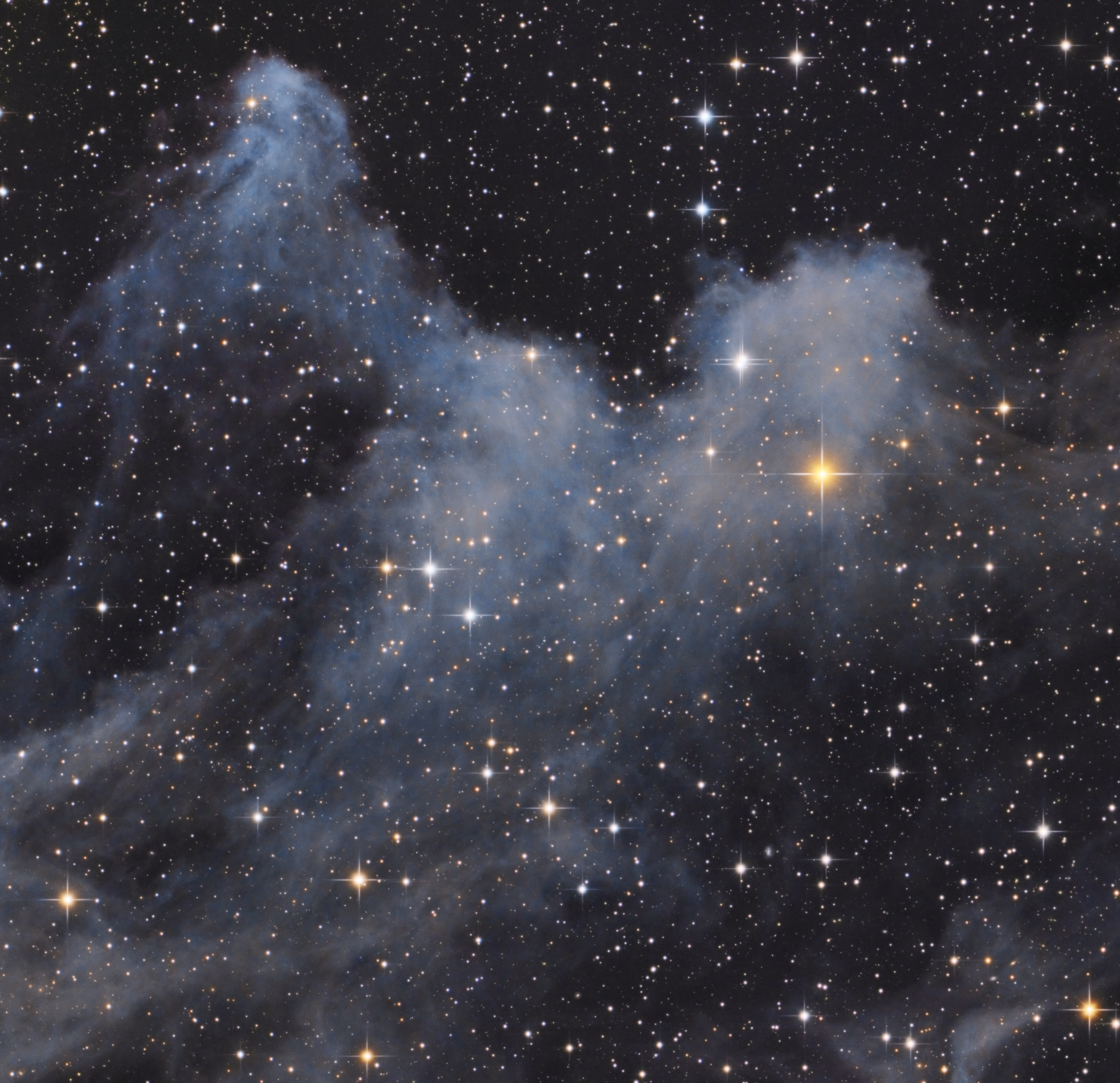alex_555 wrote:What is the distance between Witch Head Nebula and star Rigel ? At least hundred of light years I suppose. Even at such distance Rigel's light can still be reflected by the nebula ?
Yes. Consider what Rigel is:
Rigel, also designated Beta Orionis (β Orionis, abbreviated Beta Ori, β Ori), is generally the seventh-brightest star in the night sky and the brightest star in the constellation of Orion—though periodically it is outshined within the constellation by the variable Betelgeuse. With a visual magnitude of 0.13, it is a remote and luminous star some 863 light-years distant from Earth.
Rigel
Orion constellation map.svg
Rigel in the constellation Orion
Observation data
Epoch J2000.0 Equinox J2000.0
Constellation Orion
A
Right ascension 05h 14m 32.27210s[1]
Declination −08° 12′ 05.8981″[1]
Apparent magnitude (V) 0.13[2] (0.05 - 0.18[3])
B
Right ascension 05h 14m 32.049s[4]
Declination −08° 12′ 14.78″[4]
Apparent magnitude (V) 6.67[5]
Characteristics
A
Evolutionary stage Blue supergiant
Spectral type B8 Ia[6]
U−B color index −0.66[7]
B−V color index −0.03[7]
Variable type Alpha Cygni[8]
B
Evolutionary stage Spectroscopic binary
Spectral type B9V + B9V[9]
U−B color index −0.66[7]
B−V color index −0.03[7]
Variable type Alpha Cygni[8]
Astrometry
Radial velocity (Rv) 17.8±0.4[10] km/s
Proper motion (μ) RA: +1.31[1] mas/yr
Dec.: +0.50[1] mas/yr
Parallax (π) 3.78 ± 0.34[1] mas
Distance 860 ± 80 ly
(260 ± 20 pc)
Absolute magnitude (MV) -7.84[11]
Orbit[5]
Primary Ba
Companion Bb
Period (P) 9.860 days
Eccentricity (e) 0.1
Semi-amplitude (K1)
(primary) 25.0 km/s
Semi-amplitude (K2)
(secondary) 32.6 km/s
Details
A
Mass 23[12] M☉
Radius 78.9±7.4[13], 115[14] R☉
Luminosity (bolometric) 1.20+0.25
−0.21×105[13] L☉
Surface gravity (log g) 1.75±0.10[12] cgs
Temperature 12100±150[12] K
Metallicity [Fe/H] −0.06±0.10[6] dex
Rotational velocity (v sin i) 25±3[12] km/s
Age 8±1[6] Myr
Ba
Mass 3.84[9] M☉
Bb
Mass 2.94[9] M☉
Other designations
Rigel, Algebar, Elgebar, β Ori, 19 Ori, HD 34085, HR 1713, HIP 24436, SAO 131907, BD-08° 1063 [15]
Database references
SIMBAD data
The star as seen from Earth is actually a multiple star system of three to five stars, the primary star (Rigel A) being a blue-white supergiant which is estimated to be anywhere from 120,000 to 279,000 times as luminous as the Sun, depending on the method used to calculate its properties. It has exhausted its core of hydrogen and swollen out to between 79 and 115 times the Sun's radius. It pulsates quasi-periodically and is classified as an Alpha Cygni variable. A companion, Rigel B, is 500 times fainter than the supergiant Rigel A and visible only with a telescope. Rigel B is itself a spectroscopic binary system, consisting of two main sequence blue-white stars of spectral type B9V that are estimated to be respectively 3.9 and 2.9 times as massive as the Sun, Rigel Bb may itself be a binary. Rigel B also appears to have a very close visual companion Rigel C of almost identical appearance.
Just as zero is not equal to infinity, everything coming from nothing is illogical.
 Rigel and the Witch Head Nebula
Rigel and the Witch Head Nebula
